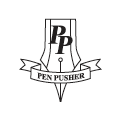
When We All Helped Out

He begins by tamping the sand flat: thumb angled out, palm gently patting the surface, packing it down into the tray. The ground is roughly levelled below the lip, ready to receive the first of the pieces; the small bushes, shrubs and rocks laid out on a sheet of newspaper. The rocks are the same colour as the sand. Alongside them is a river, a backwards ‘S’ of thick blue glass.
When he first made the scenes he would rush to organise the men: to place a few sitting, walking, some running, shouting. As he began to work more keenly on the background pieces – constructing a stone cave had done it – he realised that his attention should fall first on the landscape.
He presses the glass into the middle of the sand, dusting over the edges, and places the rocks in small groups of three or four, adding sprigs of the foliage between them. The trick – reminding himself, always at this point – is not to over do it, not to fill the scene up too quickly. Step back and feel for the balance of the piece, sense its scale. He has heard people call them dioramas, tableaux. But there is much more to it than that. This one is a simple premise: a rectangle of sand, wind-blown rocks either side of a wide river. The plane will be nosed down into the dirt beyond the right bank, the men surrounding it.
He has broken off a front wheel, some of the wing and drags it forwards across the dirt, pushing its left shoulder down into the sand. There is confusion and concern among the men, friends who have been out here for months. ‘Christ! He’s ditched it,’ he has one of them say.
The men, freed from their pink frames are painted in yellows and browns: Beach Sand and African Earth. He paints the hands and faces a light tan – the pink always looks wrong, too pale for the conditions. He bends down, level with where the two of them will be crossing the river. The perspective is good, believable.
Holding the head and torso of the first man he reaches for the scalpel and considers where to make the cut. Waist height – he’ll be in the middle of the water. Pressing down firmly with the blade, the lower body breaks off cleanly. The second man will follow behind so he clicks off the legs below each knee, the limbs jumping on the newspaper. Both men balance well enough on the river but he secures their position, cauterizing each wound with glue. As they wade towards the other side, he’ll have the two others by the bank. The man in the middle of the river is almost turning around, back to his companions, his hands raised just above the water.
He picks up the third figure and lightly treads footprints into the sand from a group of rocks towards the river, spacing them a distance apart. The fourth he stands nearer the river’s edge, looking at the plane. Bending down low into the scene again, he can see one running out in front, one stood by the bank and the two in the water, the plane in the background beyond the river, leant over on its side.
The camera is as old as he can find. An Olympus OM-1 with black and white film, set up on the tripod by the table. He has the lamp positioned for the right time of day so that stubbed shadows right-angle off the men. Framing takes a few adjustments to the tripod but once the composition is there he focuses past the runner, the man standing hands on hips, to the figure turning in the water.
The plane is slightly blurred beyond him but the white insignia is legible on the dark triangle of the tail. It’s one of the better ones, he thinks, looking through the viewfinder.
He sees the process unfold after developing the pictures: creasing and tearing some of the prints, leaving them out in the garden overnight, rubbing dirt into their edges.
Having finished the film, he picks up the old album from the table and turns through the pages to the next white space. He marks out in pencil where this one will sit. Below the box he draws a line for a caption. He writes, ‘All Of Us Help Out After The Crash’.

